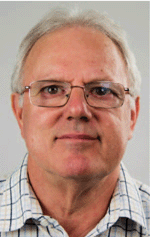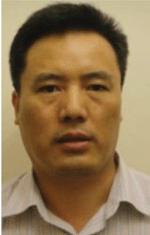A geochemical investigation into the resource potential of the Lawn Hill Platform, northern Australia
Amber J. M. Jarrett A G , Adam E. H. Bailey A , Christopher J. Boreham A , Tehani Palu A , Lisa Hall A , April Shannon B , Alan S. Collins B , Galina Vinnichenko C , Jochen Brocks C , Zhongsheng Li D , Tim J. Munson E , Sally Edwards F , Lidena Carr A and Paul Henson AA Geoscience Australia, 101 Jerrabomberra Avenue, Symonston, ACT 2609, Australia.
B University of Adelaide, North Terrace, Adelaide, SA 5005, Australia.
C Research School of Earth Sciences, Australian National University, 142 Mills Road, Acton, ACT 0200, Australia.
D CSIRO Energy, Private Bag 10, Clayton South, Vic. 3169, Australia.
E Northern Territory Geological Survey, 48–50 Smith Street, Darwin, NT 0800, Australia.
F Geological Survey of Queensland, 1 William Street, Brisbane, Qld 4000, Australia.
G Corresponding author. Email: amber.jarrett@ga.gov.au
The APPEA Journal 60(2) 722-731 https://doi.org/10.1071/AJ19118
Accepted: 30 March 2020 Published: 15 May 2020
Abstract
The Lawn Hill Platform (LHP) is a sedimentary province in north-eastern Northern Territory and north-western Queensland that hosts a significant Paleoproterozoic–Mesoproterozoic sequence, often referred to as 'the ‘Isa Superbasin’, and includes the overlying South Nicholson Group. Shale gas resources and base-metals mineralisation are known in north-west Queensland, but the larger basin is underexplored. The Australian Government’s Exploring for the Future (EFTF) 2016−2020 program aims to boost resource exploration in northern Australia. New precompetitive geochemical data obtained in this program includes source rock geochemistry, kerogen kinetics, bitumen reflectance, biomarker and δ13C n-alkanes for understanding the petroleum potential, organic geochemistry of source rocks and fluids, stratigraphic correlations and mineralogy to determine the brittleness of shales. All data and derived reports are accessible on the EFTF portal (www.eftf.ga.gov.au), providing a central location for informed decision making. The results in this study demonstrate fair to excellent source rocks in multiple supersequences that are brittle and favourable to hydraulic stimulation. A comparison to the greater McArthur Basin demonstrates, that although there are many similarities in bulk geochemistry, LHP mudstones are largely heterogeneous, reflecting local variations that may be inherited from variations in contributing biomass, microbial reworking, depositional environment, sediment input and paleoredox conditions.
Keywords: geochemistry, hydrocarbons, isotopes, kinetics, reflectance, Rock-Eval, shale gas.

Amber Jarrett is a Geochemist in the Minerals, Energy and Groundwater Division, Geoscience Australia (GA). Her research interests include basin hosted resource potential, organic-inorganic geochemistry, isotopes, Proterozoic biomarkers and early life. Amber graduated with a BSc (Hons), majoring in both Geology and Biology, in 2008 and a PhD in 2014 from the Australian National University (ANU). Amber is also a key researcher in the MinExCRC. |

Adam Bailey is a Petroleum Geoscientist at GA, with expertise in petroleum geomechanics, structural geology and basin analysis. He graduated with a BSc (Hons) in 2012 and a PhD in 2016 from the Australian School of Petroleum at the University of Adelaide. Working with the Onshore Energy Systems team at GA, Adam is currently working on the flagship EFTF in Northern Australia. |

Chris Boreham obtained his PhD in Chemistry at ANU and has worked at GA for over three decades. He is a Petroleum Geochemist with extensive experience in the application of organic geochemistry to the evolution of oil and gas in Australian sedimentary basins. More recently, he has extended these geochemical studies to unconventional petroleum (coal seam methane, shale gas and oil) and CO2CRC’s studies on the injection of CO2 into a depleted natural gas field and saline aquifer. |

Tehani Palu is a Geoscientist in the Onshore Energy Systems section in the Resources Division at GA. She gained her master’s degree from the University of Waikato (New Zealand) in 2009 and joined GA shortly after completing her studies. Tehani has been in her present role since 2013, which sees her doing basin analysis and petroleum systems modelling within the energy systems branch. She is a member of PESA. |

Lisa Hall is a Senior Research Scientist at GA, within the Onshore Energy Systems group of the Resources Division. Her current research is focused on hydrocarbon prospectivity assessments and petroleum systems modelling in a variety of Australian basins. Lisa holds an MSc in Geology and Geophysics from Cambridge University (1999) and a DPhil in Structural Geology and Neotectonics from Oxford University (2003). Lisa is a member of PESA. |

April Shannon is a PhD student at the Gothenburg University, Sweden, working on Neoproterozoic geochronology. April graduated with BSc (Mineral Geoscience) and Honours (Geology) in 2018 at The University of Adelaide. Her honours thesis is titled ‘Understanding the complexities of Proterozoic redox using carbon, nitrogen and trace metal composition of organic rich shales’, with a focus in the McArthur Basin, Northern Territory, Australia. |

Alan Collins is a Professor of Geology at The University of Adelaide. He is a tectonic geologist with interests focused mainly in the Proterozoic and in unravelling plate tectonic controls of the evolving earth system. He heads the Tectonics and Earth Systems Group. |

Galina Vinnichenko is an organic geochemistry PhD student at the ANU. She graduated with a MSc in Geology from Lomonosov Moscow State University in 2014 and a MSc in Petroleum Geosciences from the IFP School, France, in 2015. Galina is currently working on Proterozoic isotopes and biomarkers from northern Australia at the ANU. |

Jochen Brocks is a Professor of Geobiology at the ANU. He is a paleobiogeochemist with a research interest in the biological processes in deep time using molecular fossils of biological lipids (biomarkers). Jochen obtained a MSc in Chemie at the University of Frieburg and a PhD at the University of Sydney in 2001. Jochen heads the Geobiology laboratory within the Research School of Earth Sciences, ANU. |

Zhongsheng Li is a Research Scientist at Onshore Gas Program, CSIRO Energy. He holds a BSc and MSc in Geology from China University of Geosciences and a PhD in Geology from University of Canterbury, New Zealand. His research is primarily to develop and apply organic petrological techniques to evaluate thermal history of petroleum source rocks and unconventional oil and gas reservoirs (shale gas and coal seam gas) characterisation. He has extensive experience and expertise in using unique techniques (Fluorescence Alteration of Multiple Macerals and Raman Maturity Method) to evaluate maturity and quality of petroleum source rocks. This research helps industry to prioritise exploration acreage based on petroleum prospectivity and provides insights into the mechanisms of petroleum generation. Prior joining CSIRO in 2012, he previously worked at The University of New South Wales as Research Associate and Senior Research Associate. |

Tim Munson is a Senior Geologist at the Northern Territory Geological Survey (NTGS) with 19 years of experience working in the Northern Territory. Tim is a co-author and compiler of the ‘Geology and mineral resources of the Northern Territory’ (2013) and the ‘Petroleum geology of the Northern Territory’ (2014). His current research interests include the stratigraphy, sedimentology, geochronology and tectonics of Proterozoic sedimentary basins in northern and central Australia. Tim obtained his Honours and PhD degrees from the University of Queensland. |

Sally Edwards has worked within the research community connected to the petroleum industry and government sectors for more than 15 years, with experience in field and technical roles within Australia and New Zealand. She joined the Geological Survey of Queensland in 2012 and has worked in various teams, including land release/resource evaluation and resource planning, before returning to the Basin Studies group at the end of 2017. Sally’s qualifications include a BSc (Hons) in Geological Science from the University of Adelaide and a MSc in Earth Sciences from James Cook University, specialising in sequence stratigraphy and sedimentology. Sally is a member of PESA, the Society of Petroleum Engineers and the Formation Evaluation Society of Queensland (the Queensland branch of the Society of Petrophysicists and Well Log Analysts). |

Lidena Carr is a Geoscientist for the Onshore Energy Systems Directorate, Basins Systems Branch, Minerals, Energy and Groundwater Division, GA. She graduated from the ANU with a BA/BSc (Hons) in 2004, majoring in Geology and Human Ecology. In 2007, she joined GA with the then ACRES (satellite imagery), before moving to her current position as a Seismic Interpreter and Basin Analyst. She currently works within the EFTF. |

Paul Henson is a graduate from the University of Tasmania and is currently Director of the Onshore Energy Systems Section at GA. He has extensive experience in the minerals sector working on mineral systems in Proterozoic and Archaean terranes. Since 2010, he has led the Australian Governments’ onshore carbon storage program, undertaking deep onshore drilling and seismic acquisition programs in collaboration with the states and industry. He now manages the EFTF - Energy Program leading a team of researchers to acquire new pre-competitive geoscientific data to improve our understanding of the oil and gas potential of Australian onshore basins. |
References
Armour Energy (2015). ASX Announcement: 66% increase in prospective gas resources in northern Australia. Maiden prospective gas resources in the Tawallah Group, McArthur Basin (NT) and in the Riversleigh Shale Formation (QLD). (Armour Energy Limited: Brisbane.) Available at https://www.asx.com.au/asxpdf/20150921/pdf/431g7fg0r64nb7.pdf [Verified 25 April 2020].Bailey, A. H. E., Wang, L., Henson, P. A., and Hall, L. (2019a). Rock properties and in-situ stress state of the Egilabria prospect, Lawn Hill Platform, Queensland. The APPEA Journal 59, 383–393.
| Rock properties and in-situ stress state of the Egilabria prospect, Lawn Hill Platform, Queensland.Crossref | GoogleScholarGoogle Scholar |
Bailey, A. H. E., Jarrett, A. J. M., Bradshaw, B. E., Hall, L. S., Wang, L., Palu, T. J., Orr, M., Carr, L. K., and Henson, P. (2019b). Shale gas prospectivity of the Lawn Hill Platform, Isa Superbasin. In ‘Proceedings of the 2019 SPE/AAPG/SEG Asia Pacific Unconventional Resources Technology Conference, Brisbane, Australia, 18–19 November 2019’. (Unconventional Resources Technology Conference.)
Boreham, C. J., Crick, I. H., and Powell, T. G. (1988). Alternative calibration of the Methylphenanthrene Index against vitrinite reflectance: application to maturity measurements on oils and sediments. Organic Geochemistry 12, 289–294.
Bradshaw, B. E., Lindsay, J. F., Krassay, A. A., and Wells, A. T. (2000). Attenuated basin‐margin sequence stratigraphy of the Palaeoproterozoic Calvert and Isa Superbasins: The Fickling Group, southern Murphy Inlier, Queensland. Australian Journal of Earth Sciences 47, 599–623.
| Attenuated basin‐margin sequence stratigraphy of the Palaeoproterozoic Calvert and Isa Superbasins: The Fickling Group, southern Murphy Inlier, Queensland.Crossref | GoogleScholarGoogle Scholar |
Brocks, J. J., Love, G. D., Summons, R. E., Knoll, A. H., Logan, G. A., and Bowden, S. A. (2005). Biomarker evidence for green and purple sulphur bacteria in a stratified Palaeoproterozoic sea. Nature 437, 866–870.
| Biomarker evidence for green and purple sulphur bacteria in a stratified Palaeoproterozoic sea.Crossref | GoogleScholarGoogle Scholar |
Carr, L. K., Korsch, R. J., Palu, T. J., and Reese, B. (2016). Onshore basin inventory: the McArthur, South Nicholson, Georgina, Wiso, Amadeus, Warburton, Cooper and Galilee basins, central Australia. Geoscience Australia Record, 2016/004. (Geoscience Australia: Canberra.) Available at http://dx.doi.org/10.11636/Record.2016.004 [Verified 25 April 2020].
Carr, L. K., Southby, C., Henson, P., Costelloe, R., Anderson, J. R., Jarrett, A. J. M., Carson, C. J., MacFarlane, S. K., Gorton, J., Hutton, L., Troup, A., Williams, B., Khider, K., Bailey, A. H. E., and Fomin, T. (2019). Exploring for the future: South Nicholson Basin – geological summary and seismic data interpretation. Geoscience Australia Record, 2019/021. (Geoscience Australia: Canberra.) Available at http://dx.doi.org/10.11636/Record.2019.021 [Verified 25 April 2020].
Close, D. F. (2014). The McArthur Basin: NTGS’ approach to a frontier petroleum basin with known base metal prospectivity. In ‘Annual Geoscience Exploration Seminar (AGES) 2014, Darwin, Northern Territory’. (Eds A. Forbes and G. C. MacDonald.) pp. 86–89. (Northern Territory Geological Survey: Darwin.) Available at https://geoscience.nt.gov.au/gemis/ntgsjspui/handle/1/82357 [Verified 25 April 2020].
Collins, A. S., Farkas, J., Glorie, S., Blades, M. L., Cox, G. M., Foden, J. D., Hall, T., Payne, J. L., Yang, B., Nixon, A., Cassidy, E., Subarkah, D., Shannon, A., Higgie, D., Toledo, G., Dosseto, A., Kirscher, U., Edgoose, C. J., Close, D. F., Munson, T., Menpes, S. A., Spagnuolo, S., Baruch-Jurado, E., Warburton, J., and Hokin, G. (2019). Life and times of the Proterozoic McArthur-Yanliao Gulf: update on the ARC-Industry-NTGS Linkage Project. In ‘Annual Geoscience Exploration Seminar (AGES) Proceedings 2019, Alice Springs, Northern Territory, 19–20 March 2019’. (Ed. G. C. MacDonald.) pp. 44–48. (Northern Territory Geological Survey: Darwin.) Available at https://geoscience.nt.gov.au/gemis/ntgsjspui/handle/1/88374 [Verified 25 April 2020].
de Weijer, R. (2014). Armour Energy - Preparing for the next wave of investment in oil and gas exploration. Armour Energy 2014 AGM Presentation. Available at https://wcsecure.weblink.com.au/pdf/AJQ/01579796.pdf [Verified 25 April 2020].
Glikson, M., Golding, S.D., and Southgate, P. N. (2006). Thermal evolution of the ore-hosting Isa Superbasin: Central and Northern Lawn Hill Platform. Economic Geology 101, 1211–1229.
| Thermal evolution of the ore-hosting Isa Superbasin: Central and Northern Lawn Hill Platform.Crossref | GoogleScholarGoogle Scholar |
Gorton, J., and Troup, A. (2018). Petroleum systems of the Proterozoic in northwest Queensland and a description of various play types. The APPEA Journal 58, 311–320.
| Petroleum systems of the Proterozoic in northwest Queensland and a description of various play types.Crossref | GoogleScholarGoogle Scholar |
Henson, P. A., Carr, L., Fomin, T., Gerner, E., Costelloe, R., Southby, C., Anderson, J., Bailey, A., Lewis, C., Champion, D., and Huston, D. (2018). Exploring for the Future – discovering the South Nicholson Basin region with new seismic data. In ‘Annual Geoscience Exploration Seminar (AGES) Proceedings 2018, Alice Springs, Northern Territory, 20–21 March 2018’. (Ed. G. C. MacDonald.) pp. 52–54. (Northern Territory Geological Survey: Darwin.) Available at https://geoscience.nt.gov.au/gemis/ntgsjspui/handle/1/87076 [Verified 25 April 2020].
Jarrett, A. J. M., Hall, L., Carr, L. K., Anderson, J., Orr, M., Bradshaw, B. E., Henson, P., Gorton, J. (2018). Source rock geochemistry of the Isa Superbasin and South Nicholson Basin, northern Australia: Baseline regional hydrocarbon prospectivity. Geoscience Australia Record, 2018/038. (Geoscience Australia: Canberra.) Available at http://dx.doi.org/10.11636/Record.2018.038 [Verified 25 April 2020].
Jarrett, A. J. M., MacFarlane, S., Palu, T., Boreham, C., Hall, L., Edwards, D., Cox, G., Brocks, J., Munson, T., Carr, L. K., and Henson, P. (2019). Source rock geochemistry and petroleum systems of the greater McArthur Basin and links to other northern Australian Proterozoic basins. In ‘Australian Geoscience Exploration Seminar (AGES) Proceedings, Alice Springs, 19–20 March 2019’. (Ed. G. C. MacDonald.) pp. 95–105. (Northern Territory Geological Survey: Darwin.) Available at https://geoscience.nt.gov.au/gemis/ntgsjspui/handle/1/88381 [Verified 25 April 2020].
Jarrett, A. J. M., Li, Z., Faiz, M., and Palu, T. (2020). An organic petrological analysis of shales and carbonates in the Isa Superbasin, northern Australia. Geoscience Australia Record 2020/001. (Geoscience Australia: Canberra.) Available at http://dx.doi.org/10.11636/Record.2020.001 [Verified 2 May 2020].
Jarvie, D. M. (2012). Shale resource systems for oil and gas: part 1—shale-gas resource systems. In ‘Shale reservoirs – giant resources for the 21st century’. (Ed. J. A. Breyer.) pp. 69–87. (American Association of Petroleum Geologists: Tulsa.)
Palu, T. J., Jarrett, A. J. M., Boreham, C., Hall, L. S., Bradshaw, B. E., and Orr, M. (2018). Challenges and possible solutions for burial and thermal history modelling of the Lawn Hill Platform, Isa Superbasin. In ‘20th Australian Organic Geochemistry Conference: Origins of Oil, Old Organics and Organisms, Canberra, Australia, 3–7 December 2018’. (Eds D. S. Edwards, E. Grosjean, J. J. Brocks and L. van Maldegem.) Abstract 7.15. (Geoscience Australia: Canberra.) Available at http://dx.doi.org/10.11636/Record.2018.044 [Verified 25 April 2020].
Revie, D. (2017). Unconventional petroleum resources of the Roper Group, McArthur Basin. Northern Territory Geological Survey Record, 2017–002. (Northern Territory Geological Survey: Darwin.) Available at https://geoscience.nt.gov.au/gemis/ntgsjspui/handle/1/85134 [Verified 25 April 2020].
Revie, D. and Normington, V. J. (2018). Shale resource data from the greater McArthur Basin. Northern Territory Geological Survey Digital Information Package, DIP-014. (Northern Territory Geological Survey: Darwin.) Available at https://geoscience.nt.gov.au/gemis/ntgsjspui/handle/1/82595 [Verified 25 April 2020].
Tegelaar, E. W., and Noble, R. A. (1994). Kinetics of hydrocarbon generation as a function of the molecular structure of kerogen as revealed by pyrolysis-gas chromatography. Organic Geochemistry 22, 543–574.
| Kinetics of hydrocarbon generation as a function of the molecular structure of kerogen as revealed by pyrolysis-gas chromatography.Crossref | GoogleScholarGoogle Scholar |
Tissot, B. P., Pelet, R., and Ungerer, P. H. (1987). Thermal history of sedimentary basins, maturation indices, and inetics of oil and gas generation. The American Association of Petroleum Geologists Bulletin 71, 1445–1466.


